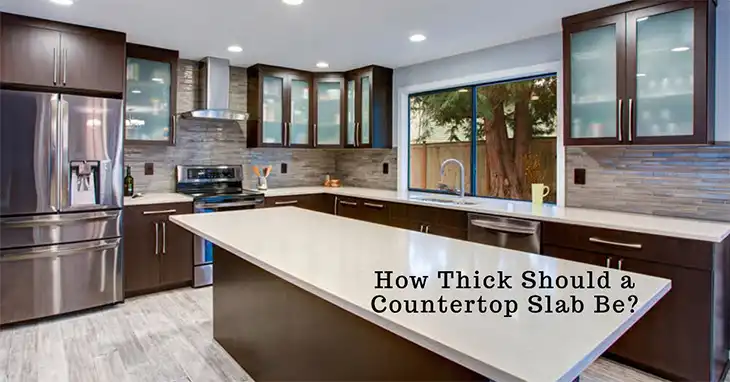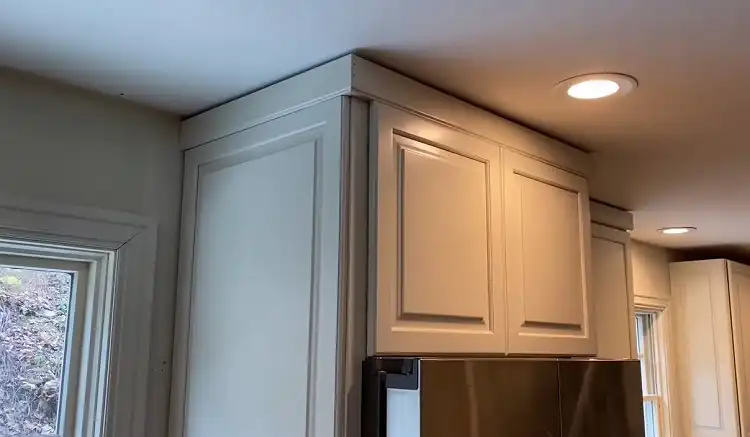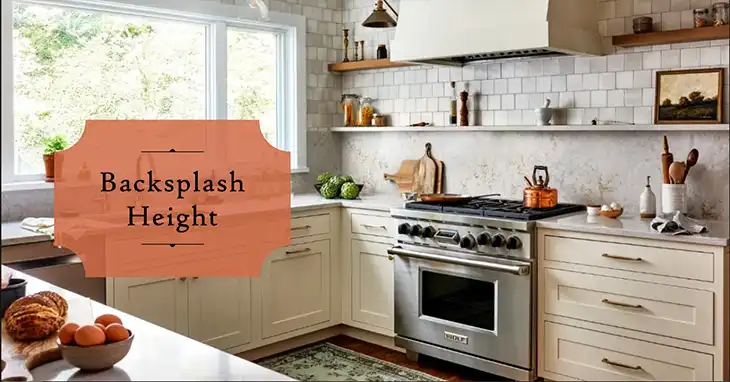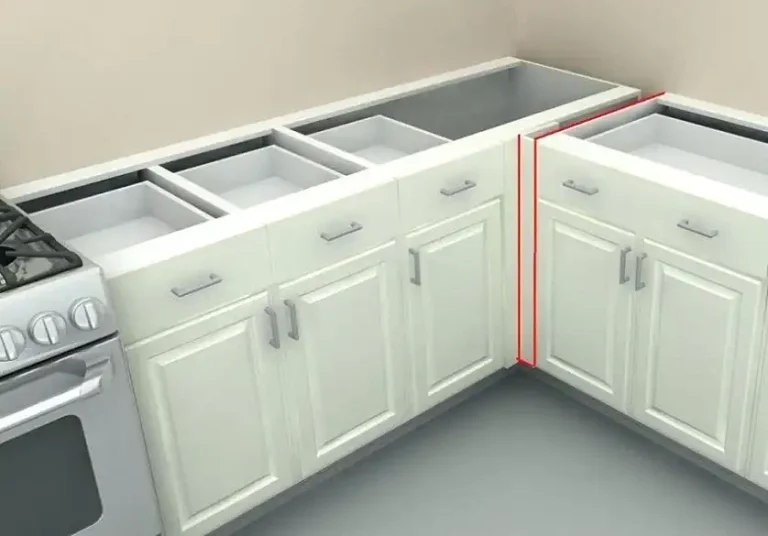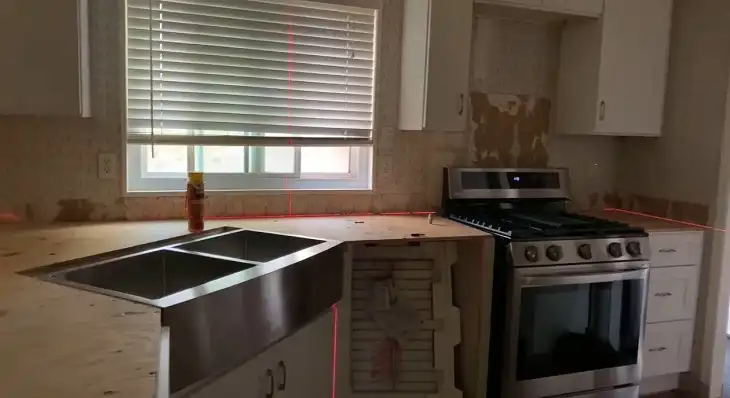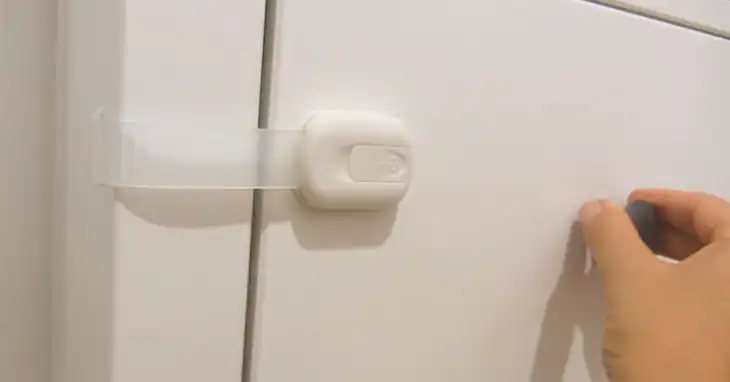How To Fix Cabinets That Won’t Close
Having cabinets that won’t close properly can be a minor annoyance that disrupts the look and function of your kitchen or bathroom. Often, the fix is simpler than you might expect!
With a few tools and some basic techniques, you can get your cabinets back in perfect working order. Here’s a step-by-step guide to identify the cause and correct the problem.
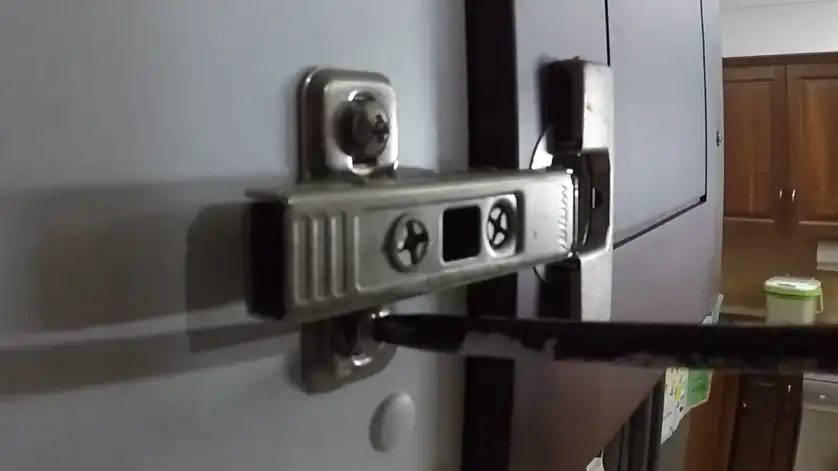
How Do You Fix A Cabinet Door That Won’t Close All The Way?
Here’s how to troubleshoot and fix the most common causes of cabinets that won’t close.
Step 1: Adjust the Cabinet Hinges
One of the most common reasons cabinets won’t close properly is due to misaligned or loose hinges. Over time, hinges can become loose, causing the door to sag or misalign, which prevents it from fully closing. Tightening and adjusting hinges can often resolve this issue.
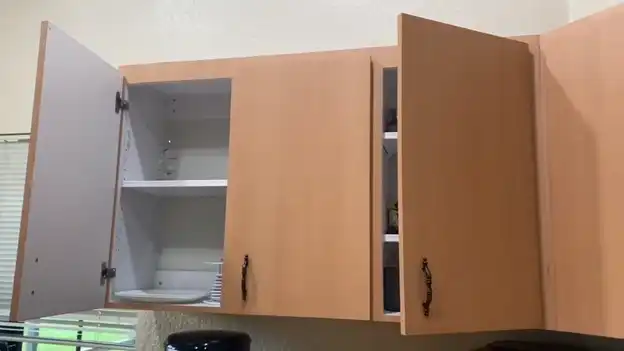
To start, open the cabinet door and check the screws on the hinges. Use a screwdriver to tighten any loose screws, as even a slight adjustment can make a difference in how the cabinet closes. If the screws are already tight, you may need to adjust the position of the hinge plate itself.
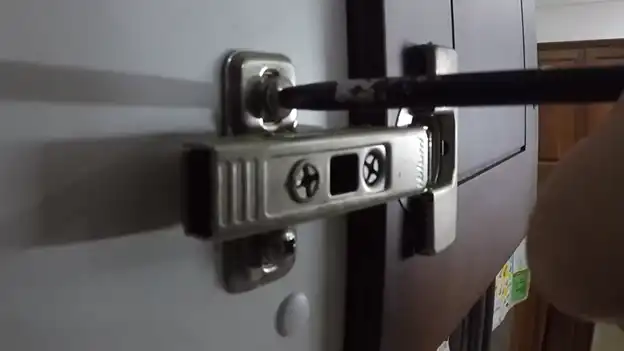
Many modern hinges come with adjustment screws that allow you to fine-tune the door’s position up, down, left, or right. Turn each screw carefully, testing the door’s movement as you go, until it lines up with the cabinet frame and closes smoothly.
Step 2: Check for Warped or Swollen Doors
Sometimes, humidity or temperature changes can cause cabinet doors to warp or swell, which prevents them from closing properly. If you notice the door edges aren’t flat against the cabinet frame, warping could be the problem.
For minor warping, you might be able to fix this by loosening the hinge screws slightly and then gently pressing the door back into place. If the wood is swollen due to moisture, try letting it dry out by leaving it open for a day or two, which may help restore its original shape.
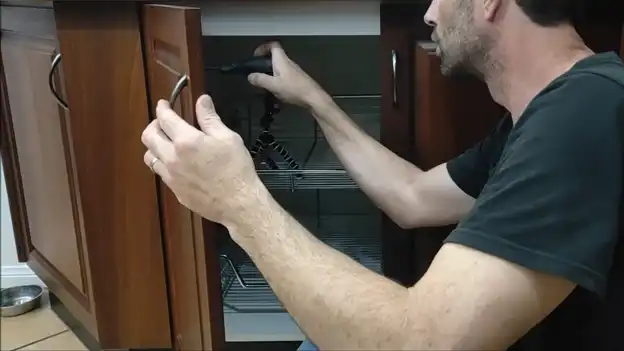
For more severe warping, you may need to sand down the edges slightly to allow the door to close. Use sandpaper on the swollen area, sand in small increments, and test the door’s fit frequently to avoid removing too much material.
Step 3: Replace or Adjust the Magnetic Catch
A magnetic catch, often found at the top or bottom of the cabinet, is designed to hold the door in place when closed. Over time, these catches can wear down, making them less effective at keeping the door shut.
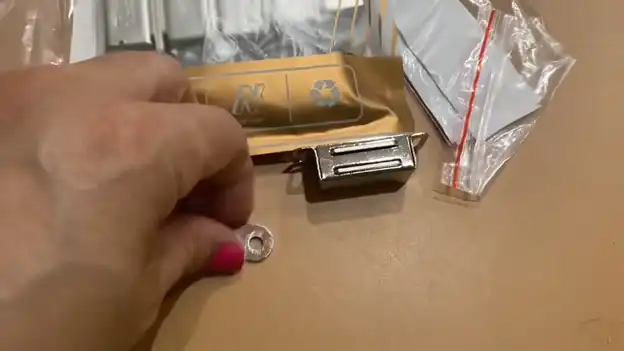
To fix this, check the catch by gently pressing on it while closing the door. If it doesn’t hold well, try adjusting its position by loosening the screws and moving the catch slightly closer to the door.

For an older or damaged magnetic catch, consider replacing it entirely. Replacement catches are inexpensive and can be easily installed with a screwdriver.
Step 4: Check the Door Bumpers
Door bumpers are small rubber or silicone pieces often attached to the inside corners of cabinet doors to soften the closing impact. However, if these bumpers are too thick or misplaced, they can prevent the door from fully closing.
Inspect the bumpers to ensure they’re positioned correctly. If they’re too thick, you might need to replace them with thinner bumpers.
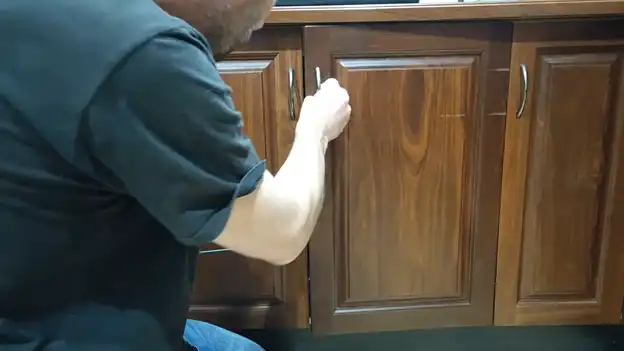
In some cases, repositioning the bumper slightly further from the cabinet edge can make a significant difference in how the door closes. Replacement bumpers are easy to find at hardware stores and simple to install with adhesive backing.
Step 5: Inspect and Fix Misaligned Cabinet Frames
In some cases, the cabinet itself may be slightly misaligned, especially in older homes where walls and floors can shift over time. This misalignment can create issues with the cabinet door closing properly.
To check for misalignment, measure the cabinet frame’s alignment relative to the door. If the cabinet is slightly off, you can try adjusting it by loosening the screws holding the cabinet in place and shifting it to a better position.
Alternatively, adding shims between the cabinet and the wall can help correct minor misalignments. This process may take a little time, but it can significantly improve the cabinet’s functionality and overall appearance.
Frequently Asked Questions
How do you fix a gap between cabinets and walls?
The Wood or Trim Solution is a simple and fast way to fill gaps between cabinets and walls. You can use pieces of wood or trim that you’ve cut to the right size. Fit the pieces into the gaps and secure them with nails or screws. This is a cheap and easy way to fix the gaps, and you can do it quickly.
How do you fix a cabinet separating from the wall?
Screw the cabinets directly into the wall studs for a strong hold. We can find the studs and use longer screws that are made for this. Put new construction adhesive behind the cabinets to make them even more secure.
Conclusion
Fixing cabinets that won’t close often comes down to inspecting hinges, making small adjustments, and occasionally replacing damaged hardware. By following these steps, you’ll restore your cabinet doors to perfect working order in no time, saving you the cost of a repair professional!
Also, regular maintenance of hinges, catches, and bumpers can also help prevent these issues from recurring, keeping your cabinets looking and functioning their best.

